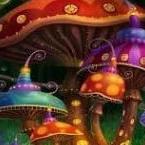-
Welcome to the eG Forums, a service of the eGullet Society for Culinary Arts & Letters. The Society is a 501(c)3 not-for-profit organization dedicated to the advancement of the culinary arts. These advertising-free forums are provided free of charge through donations from Society members. Anyone may read the forums, but to post you must create a free account.
Herb beers - ever brewed them?
-
Similar Content
-
- 176 replies
- 35,857 views
-
- 13 replies
- 4,053 views
-
Plastic Clamshells - love them or hate them? Discussion of plastic waste and alternatives. 1 2
By MaryIsobel,
- 27 replies
- 3,591 views
-
- 77 replies
- 24,514 views
-
- 3 replies
- 1,198 views
-
-
Recently Browsing 0 members
- No registered users viewing this page.






Recommended Posts